Finns love Tampere – for eight years now, the city has been considered the most attractive residential destination in Finland. Baltic Outlook editor-in-chief Ilze Pole headed to Tampere to see what makes this nature-loving city one of the most conscious places in the world.
It was mid-April, well after midnight, and I was in the happiest country in the world. ‘Am I happy?’ I thought. I’ve always believed it to be the case, although my own country, Latvia, ranks number 51 in the most recent World Happiness Report, while Finland has taken first place for the fifth year in a row.
I asked almost everyone I met here about living in the happiest country in the world – at an ice hockey game, in the sauna, during a short hike in the woods near Tampere. My question was met with a smile, a pause, and then, ‘Well… I don’t know.’ And often a joke about Finns living so far apart from each other that they definitely must feel happy. But many of the people I met mentioned that one of those ingredients is living very close to nature.
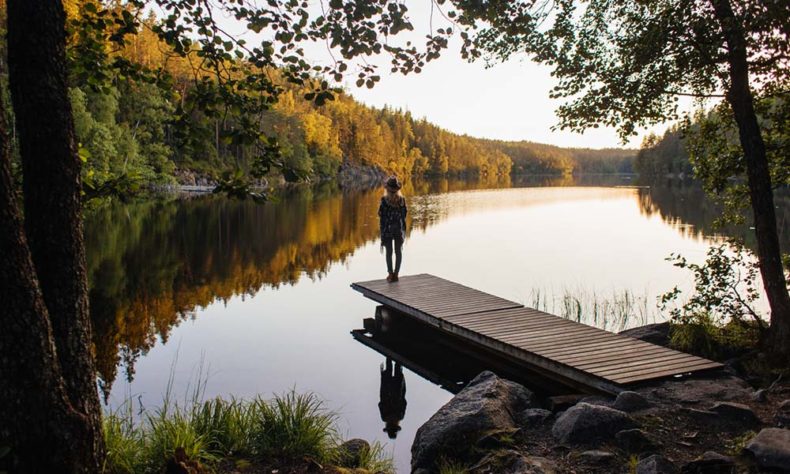
So, my trip to Tampere turned into a search for touchpoints with happiness in a city that has for centuries used its natural resources – primarily water – for its development. In a city that sits between two blue lakes and where the brown brick buildings dominate the cityscape.
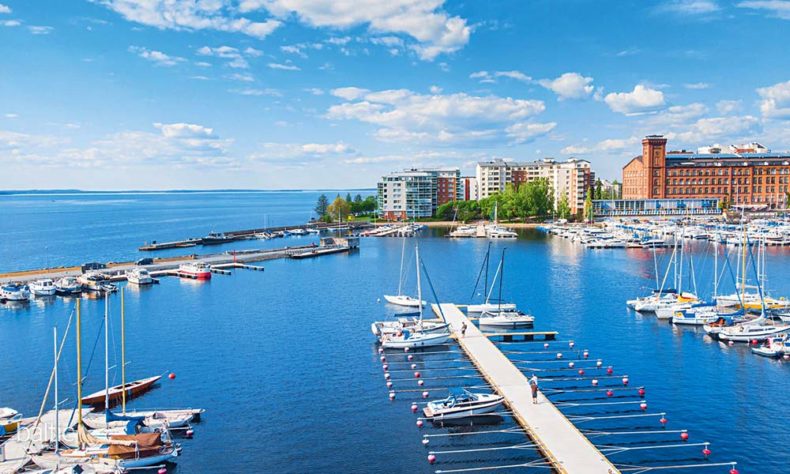
Photo by Laura Vanzo
Charming industrial heritage
Those brown brick buildings in the city centre are the industrial heritage of Tampere. In 1820, the Scotsman James Finlayson founded a cotton factory here that eventually grew into one of the most important industrial companies in the whole Nordic region. Nowadays, the Finlayson neighbourhood houses offices, restaurants, cafés, shops, and museums. But in fact, this is very characteristic of the whole city – through renovation, nearly all of the old buildings here have been adapted to new purposes. Such as the Vapriikki Museum Centre located in the former premises of the Tampella factory.

Photo by Laura Vanzo
The Swedish word fabrik (‘factory’) became the Finnish vapriikki, a name that now emphasises the origins and significance of the new museum centre’s location. This is nowadays also a highly desirable place to live, with the apartments here being some of the most expensive in Tampere and the wooden villas on the nearby hill once being home to the engineers and directors at Tampella.
Construction on the nearby Tampere Market Hall began in 1899. Opened two years later, this steel-and-brick building, which is still the biggest indoor market hall in the Nordic countries, cost more to build than Tampere Cathedral. Both buildings still stand, one feeding the body, the other feeding the soul.
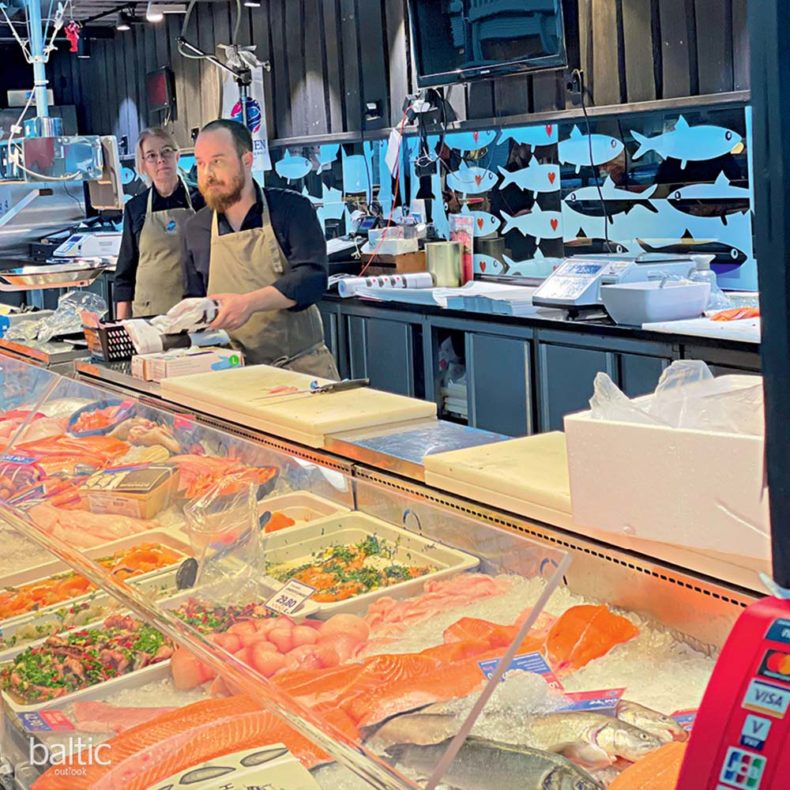
Photo by Laura Vanzo
Shops selling fresh fish, cheese, and other local produce and delicacies, small restaurants. offering delicious meals… It was meant to be a quick lunch, but almost two hours later I was still at a table at 4 Vuodenaikaa (Four Seasons) with a friend. It’s located at the end of the hall, which gave me a good vantage point from which to observe and soak in the atmosphere. For a moment I forgot about the time, forgot about where exactly I was, and the reasons why I was there. I’ve realised that’s one of the best feelings I can have about a place when travelling.
Thinking big
The story of Tampere Cathedral proves that there`s always been plenty of creative energy in this town. Originally named St. John’s Church, this Protestant church was built between 1902 and 1907. Its architect, Lars Sonck, was just 32 years old when he took on the job in Tampere, after winning a competition at age 23 to design St. Michael’s Church in Turku, which reflects the Gothic Revival style. Tampere Cathedral was built in the National Romantic style, with Sonck ignoring the growing trend towards architectural rationalism at the time. That on its own was rebellious.
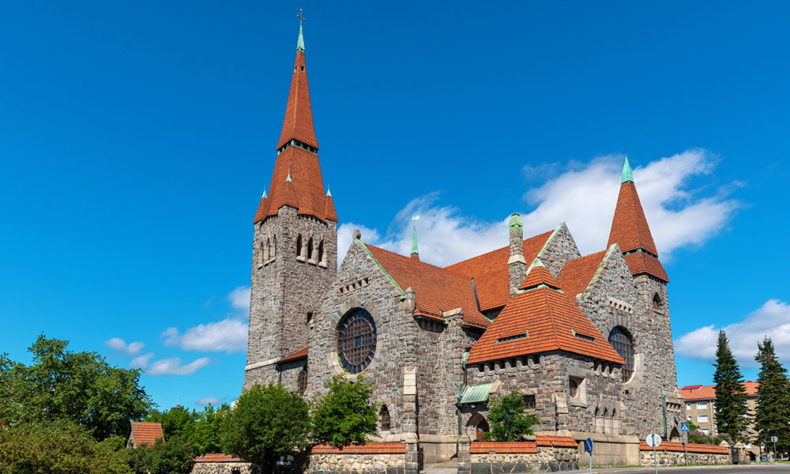
The building has a rough granite façade and a nearly square footprint with three naves. The community wanted at least 2000 seats in the church but lacked the funds for a building of that size. Sonck solved this by designing large galleries inside the church. All together, the cathedral leaves a very modern, atypical impression, bearing in mind its time of construction. It also has a fascinating altarpiece and frescos by two Finnish artists – symbolists Magnus Enckell and Hugo Simberg – who were around the same age as Sonck when they painted the works. The thought crosses my mind of three hipsters being given free rein to express themselves in any way they wanted, not caring much for the outrage they might cause, rebelling against the rights and wrongs of the time, Finland still being a part of the Russian Empire back then.
One of Simberg’s paintings, which circles the rim of the balcony, shows 12 nude angels carrying a heavy garland of roses. In fact, the whole cathedral is decorated with rose motifs. If you look closely, each of the angels carries the garland in its own way, which is no coincidence, considering that these images are meant to show that all the ways in which we choose to live and approach life are acceptable.
Still today, the city seems to favour grand buildings and construction projects. For example, Nokia Arena was designed by internationally renowned American architect Daniel Libeskind. Opened last December, it will host the World Ice Hockey Championships starting on May 13. On that same day, the tournament will open with a game between Latvia and the United States. The arena is an extraordinary building, especially bearing in mind that it stands on a deck over the railway tracks. But the arena is only one part of a complex that also includes a hotel and five adjacent towers including residences, retail spaces, and offices. Libeskind has commented that each of the buildings has its own unique identity, and as a whole they create a dynamic urban skyline.
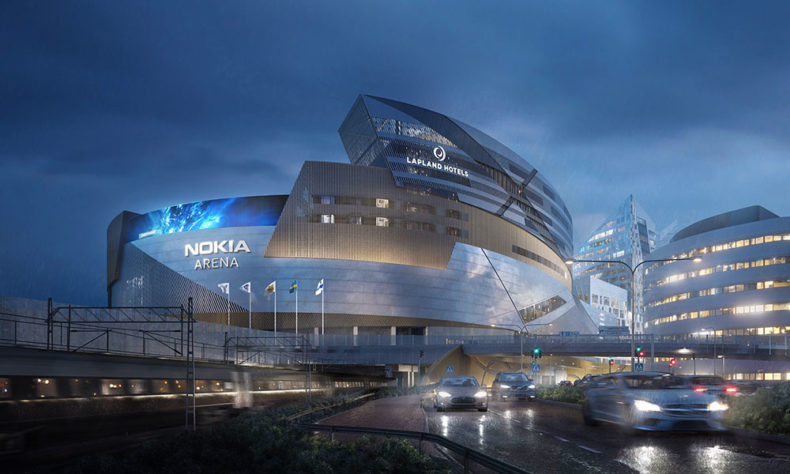
Sky blue lakes and relaxing saunas
Lakes and forests encircle Tampere, and this mix of all the shades of blue and green that colour the summer are close by. Outside the city centre, it’s often not clear where the city ends and where the forest begins, or even if the forest is part of the city, as it is in Pyynikki.

Photo by Laura Vanzo
Pyynikki is located on the top of the tallest longitudinal esker in the world, a ridge that rises up to 160 metres above sea level and 80 metres above the surface of Pyhäjärvi Lake. This district of the city is located between the city centre and the western neighbourhood of Pispala. Pine trees, Norway maples, junipers, lingonberries, and mountain currants all grow lushly here. Wooden stairs at several points lead from the lakeshore to the top of the Pyynikki Esker. This is a place where locals love to spend time, whether for a simple afternoon walk, for running, or for skiing in winter.

Photo by Laura Vanzo
Saunas are also an important part of everyday life here. That’s proven by the fact that even my hotel room has a sauna, complete with detailed instructions on how to use it. One bright and early morning, I find myself at Tahmelan Huvila, a beautiful white wooden villa on the shores of Pyhäjärvi Lake. It’s an inclusive cultural centre that also houses a public sauna. A sign on the door declares Tampere the sauna capital of the world, and that’s not just a self-proclaimed title. It’s actually true. There are more than 50 public saunas in the Tampere region. Rajaportti Sauna in Pispala, for example, was built in the early 20th century and still welcomes visitors. And Rauhaniemi Sauna next to Näsijärvi Lake offers a sauna experience, yoga, and SUP board rentals in the summer.
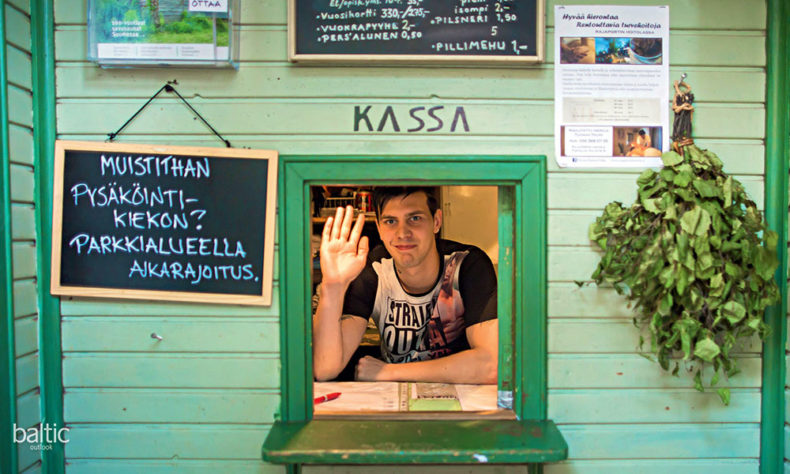
Photo by Laura Vanzo
According to the folkloric tradition, a sauna is inhabited by spirits, and there are deep-seated beliefs in Finland surrounding these sauna spirits. ‘The spirit takes care of the sauna and gives its gifts to the people bathing in the sauna,’ says my sauna guide. ‘It’s believed that the spirits help to create a good löyly, which in turn gives people what they need to regain their health and energy.’ Löyly, I realise, is that almost mystical core energy of the sauna. If you go to a sauna regularly, your body gets used to it and the sweating process begins sooner, meaning that your body is cleansing itself more efficiently. You also build up more endurance as your body gets used to the heat. But a sauna is never about endurance. It’s about taking care of the mind, body, and spirit with the help of löyly.

Read more about Tampere in Baltic Outlook.